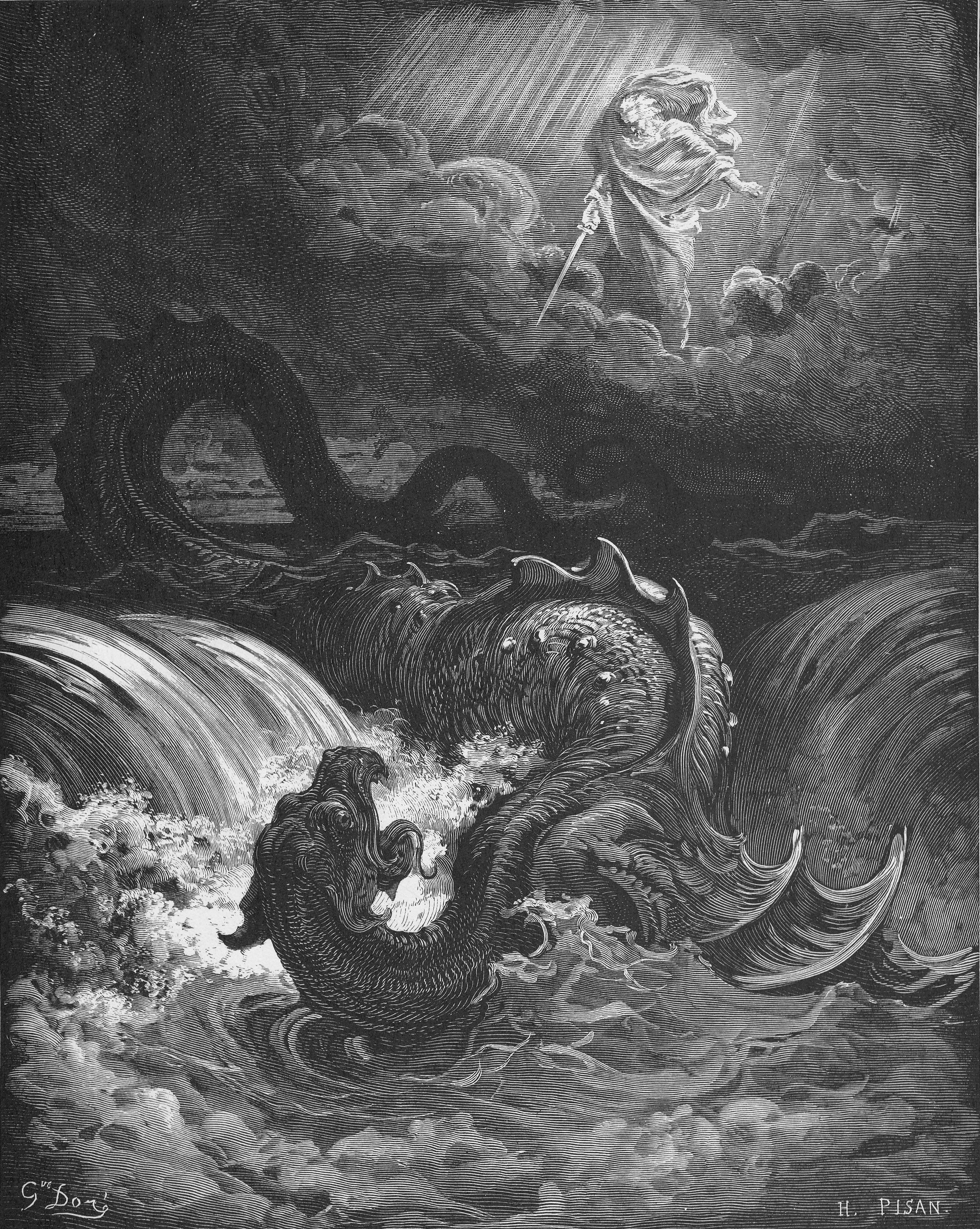Gustave Doré is a famous French artist known best for his wood engravings that are popular to this day. His works were so high of praise that he was commissioned to work on the history’s most famous epics like John Milton’s Paradise Lost and Alighieri Dante’s The Divine Comedy. The Destruction of Leviathan is such engraving created based on the Biblical references. The illustration created by Gustave Doré was engraved into wood by H. Pisan; hence, one could observe the name of him as well. The present day meaning of Leviathan has become generalized and people are considering any aquatic creature that is large associated to it. However, there is a specific description of the creature in the Bible, which shall be discussed below before going into the analysis of the Destruction of Leviathan.
The Book of Job – Chapter 41
Lord speaks to Job and describes about Behemoth and Leviathan. Leviathan is described as a creature that is so fierce that anyone witnessing will be terrified and overwhelmed. He has teeth that are terrible and a mouth so strong that no man can open with force. The scales of Leviathan are strong, double-layered and impenetrable. Even air cannot go through the scales for such is the firmness of the scales. His sneezing causes light to emerge and his eyes appear as great light of the morning.
Leviathan is full of fire and his breathing is enough to spark coals. The greatest strength of Leviathan lies in his neck and his flesh is immovable. The heart of the creature is hard resembling a stone. The Lord mentions that no mortal weapon can pierce Leviathan and it laughs at such threats. Finally, Leviathan is described “he is king over all the children of pride”.
In The Book of Isaiah [27:1] it is written that when the God comes to Earth during the judgement day He shall punish the great serpent and slay it.

The Destruction of Leviathan Analysis
There are only scant references of the Leviathan that one could acquire about the serpent Leviathan. However, Gustave Doré has done a great job in finding resources and finding inspiration to bring them to pieces to complete the work. He had very little to work with as there is nothing from the Bible that describes the battle of God and Leviathan. There is only a mention that He will kill Leviathan as a punishment. Although, there is a great detail mentioned about the body of Leviathan it is not sufficient for picturing an image and completing it with precision.
Gustave Doré has achieved perfection in this, despite fewer sources, and has produced the most complete figure of Leviathan in history. In the work, Leviathan is completely overthrown by God into the sea. The enormous size of the creature is depicted by the foaming water forming a huge cleft in the sea. The darkness spread around the scene is penetrated by the light around God who is handling a sword with fierce look.
The face of the serpent is typical to the Norse depictions of the monster relating the tale to the Norse tale of Midgard Serpent that died in the hands of Thor, son of Odin. In Rig Veda, a similar tale is present where Indra kills Vritra [first born of dragons] with his thunderbolt. Gustave in The Destruction of Leviathan uses the creature to show the unification of the tales and resemblances in the mythologies of various religions. It can be observed that the representation of God is not typical to Christianity and is covered only in a white cloth “Universifying” the form.
The Destruction of Leviathan is representation of the abolishment of darkness and purging the world from the insanity created by wildness. This has a greater philosophical meaning and Gustave Doré was well-learned to present his thoughts of unification through his work.
Destruction of Leviathan - Download in PDF